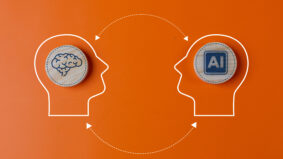
Teaching with AI: From Prohibition to Partnership for Critical Thinking
What if the AI tools we are trying to limit and caution against were actually essential (or beneficial) to enhancing the critical thinking skills we


What if the AI tools we are trying to limit and caution against were actually essential (or beneficial) to enhancing the critical thinking skills we

In higher education, assignment titles often serve a functional purpose, indicating the sequence of assignments rather than their specific objectives. However, intentionally structuring assignment titles

Our primary role as educators is to create learning environments that service a diverse student body. To be successful, this environment should focus on the

Expectations of adult learners are generally high. They are assumed to be naturally focused, motivated, and self-directed. While this may be true, some adult students

In higher education, administrators and educators are constantly rethinking how to further help students best retain course information. Recently, many have focused their attention to

If there ever was a time to create a flexible structure for student learning and success, the time is now. One of the most empowering

Why did the chicken cross the road? To get to the other side. Why did the chicken cross the playground? To get to the other

Where did it all go wrong? Professor Elavor* just wrapped up what she hoped would be a successful semester of her new online course—Introduction to Natural Sciences. Unfortunately, the course ended with a giant thud.
For both new and veteran faculty, inheriting a syllabus to teach from is like being blindfolded on a long journey and being told, “Don’t worry, you’ll know it when we get there.” There’s a lot of trust required in order to follow someone else’s map. There are road hazards the mapmaker may not be aware of; there may be alternate routes that might get you there more directly; and it may even be prudent to choose another mode of transportation to get there.
One of the strengths of gamification is that it provides visible milestones of the student’s mastery of content in real time (when it is well designed). Too often in an instructional setting, the learner doesn’t know whether or not he or she really understands or can apply the knowledge they are learning. There is often no visible sign of mastery of the content or application of the content.
Get exclusive access to programs, reports, podcast episodes, articles, and more!